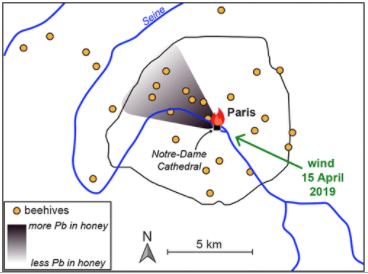July 29, 2020
PCIGR researchers PhD candidate Kate Smith and supervisor Dominique Weis talk to UBC Science, UBC News, and The New York Times about their latest research.

Kate and Dominique used sensitive mass-spectrometer techniques to determine that the average concentration of lead in honey collected downwind of the Notre-Dame cathedral in Paris, three months after the devastating April 2019 fire, was around four times higher than lead levels in honey collected from the countryside and about three-and-a-half times higher than the urban honey collected before the fire. The research was published last week in Environmental Science & Technology Letters.
Despite these lead levels, all the honey collected for this study in and around Paris following the fire are still within the European Union’s safe levels for consumption.

